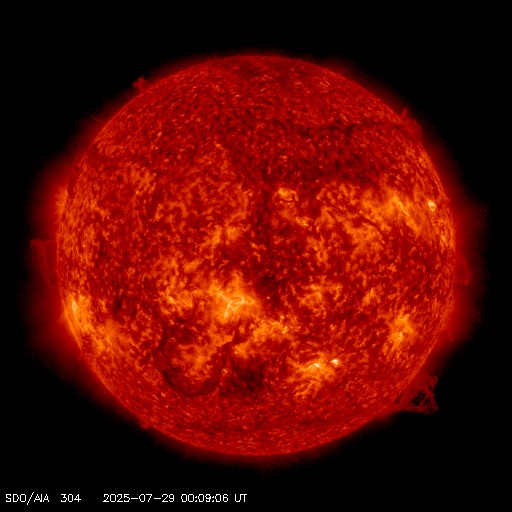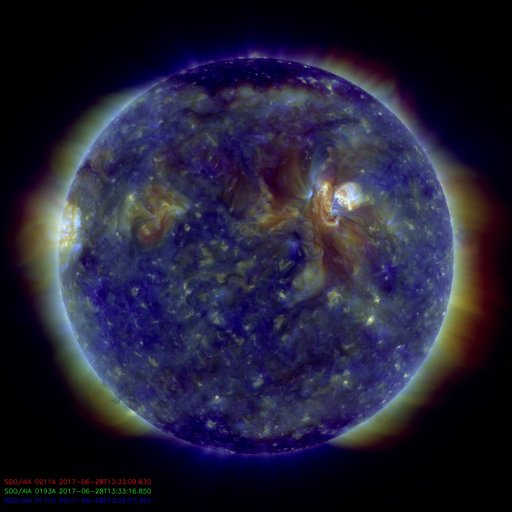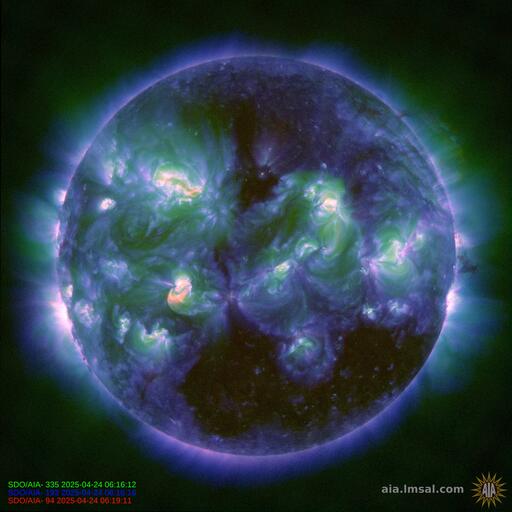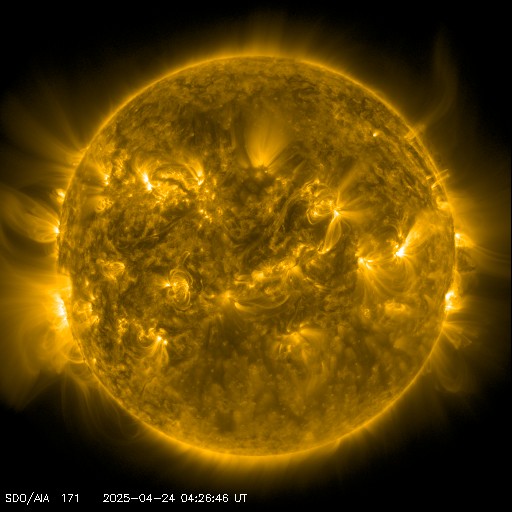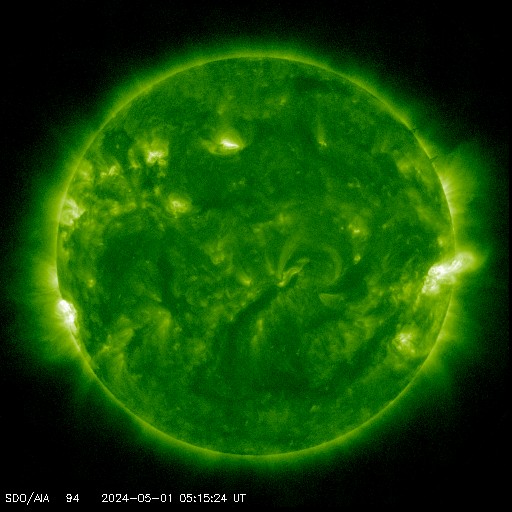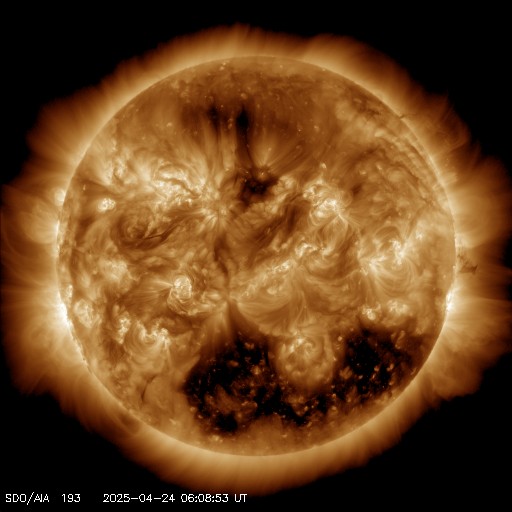As seen in the EVE image to the left, sunspot 1890 is directly Earth facing and has just produced a strong X1.1 solar flare at 05:14UTC.
Looking at the latest STEREO images, there is a CME that was produced along with this X flare.
Looking at the latest STEREO images, there is a CME that was produced along with this X flare.
More updated images are needed to tell the direction and speed of this CME.
Check back often for further updates.
The Goddard Space Flight Center CME model has been updated. The CME that was produced in association with this X flare is expected to have a direct Earth impact and will arrive late on Nov. 12th through early Nov. 13
Event Issue Date: 2013-11-10 10:00:59.0 GMT
CME Arrival Time: 2013-11-12 18:39:35.0 GMT
Arival Time Confidence Level: ± 6 hours
Disturbance Duration: 24 hours
Disturbance Duration Confidence Level: ± 8 hours
Magnetopause Standoff Distance: 4.9 Re
Click HERE to view the animated CME model

